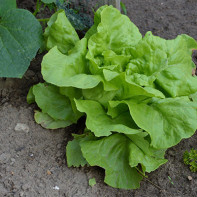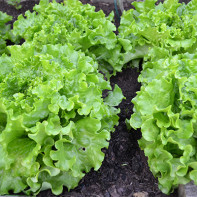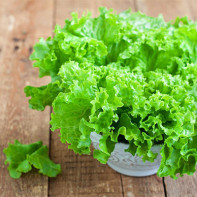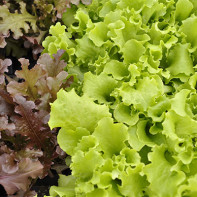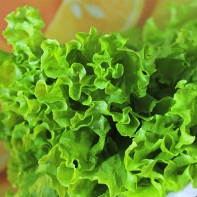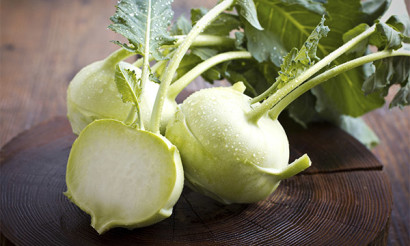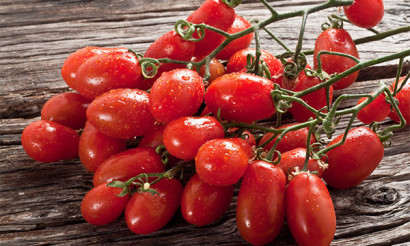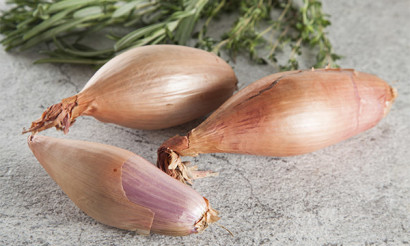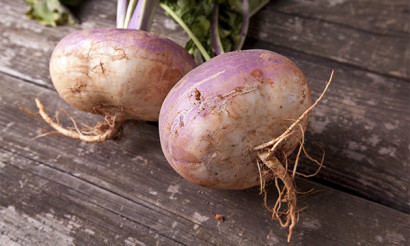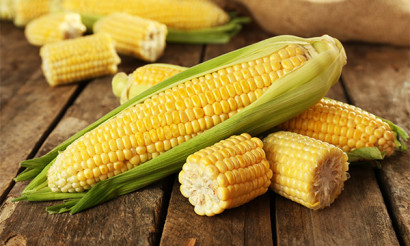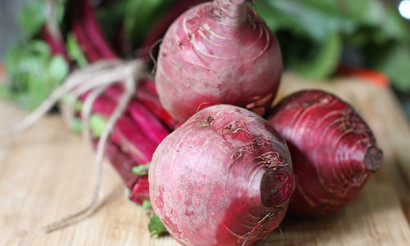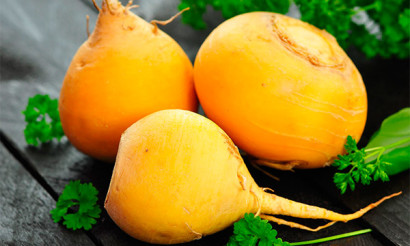Leaf lettuce: useful properties and contraindications
Modern cooks often use leaf lettuce as the basis for many second courses. However, in most cases, it is used as a decorative tool in the design of the served dish. This approach is caused by the convenient shape and attractive appearance of the plant. Still, we should not forget about its useful properties and vitamin value, which is so necessary for any human body.
- Types of leaf lettuce
- Lettuce
- Rucola
- Romano or romaine lettuce
- Iceberg
- Composition and Calories
- Benefits of leaf lettuce
- For Women
- For Men
- For Pregnancy
- Breastfeeding
- For children
- For Slimming
- Leaf lettuce in medicine
- Diabetes mellitus
- For pancreatitis
- For gastritis
- With gout
- Cosmetic Usage
- Lettuce facial tonic
- Mask for normal skin
- For Dry Skin
- For Oily Skin
- Cooking Usage
- Hazards and Contraindications
- How to choose and keep leaf lettuce
- Can I Freeze?
- Can be tinned?
- How to Preserve Leaf Salad for Winter
- How to cook leaf salad: Recipes
- With lemon juice
- With mustard
- With honey
- With garlic
- With nuts
- Why are lettuce leaves bitter?
- Why
- How to remove the bitterness
- Can we give leaf lettuce to animals?
- Interesting facts about leaf lettuce
Today, leaf lettuce is easy to find on the counter of any supermarket, making it not only a useful and attractive culinary ingredient, but also easily accessible, able to replenish the body with necessary micronutrients.
The presented vegetable is one of the ten most useful plant foods that are high in beneficial vitamins and minerals. It is the undisputed leader in calcium content and takes second place in the composition of minerals, second only to spinach. In addition, leaf lettuce has the highest concentration of vitamin K, which helps improve blood clotting. This property helps to avoid both bleeding gums and nosebleeds, which a certain group of people suffer from.
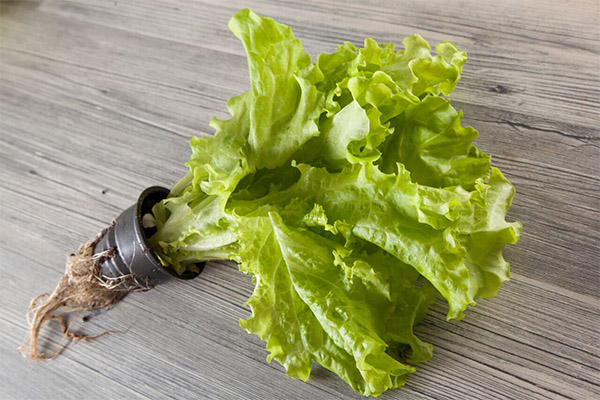
Plus, lettuce contains a fair amount of folic acid, which ensures the normal functioning of the circulatory system and strengthens the immune system. Finally, it is worth noting that the vegetable belongs to the dietary group of products that are low in calories and help improve digestion.
Types of leaf lettuce
In the culinary world knows more than 100 different types of leaf lettuce, which are used to prepare various dishes. They can be leafy or cabbage and differ in a variety of shapes as well as colors. The shape and size of the leaf in different species can also vary considerably. Some take the form of large whole leaves similar to cabbage leaves, while others are small in size and more reminiscent of mint or sorrel in shape. In addition, there are popular varieties that can be found everywhere.
Lettuce
This variety of leaf lettuce is the most common. The main difference of this vegetable is that as it grows, the leaves of the plant form small rounded formations that look like weakly compacted cabbage cauliflowers. To preserve the rich vitamin base, the cut leaves are washed with cold water and separated into large components or used whole.
In addition to the cabbage form, lettuce can also take a leafy form. Such lettuce, on the contrary, it is recommended to cut quite finely, as the maximum value is the allocated juice. It is easy enough to distinguish it by its contrasting coloring, where burgundy veins stand out against the green background.
Rucola
This is one of the earliest varieties of lettuce, which was used even in the cooking of ancient Rome. Today it is grown by farmers in southern Europe. The young leaves of this lettuce are considered the most valuable because they do not have a bitter taste, unlike the older leaves.
The most favorable time for harvesting this vegetable is the end of spring and early summer, during this period the lettuce has the most pleasant taste and contains the maximum concentration of vitamins. This plant contains large amounts of ascorbic acid, as well as carotene. Rucola makes excellent flavor combinations with most vegetables used in cooking.
Romano or romaine lettuce
In common parlance, this leafy lettuce is also called Chinese cabbage, which is used to make the popular Caesar salad. The mature plant takes the form of a soft, elongated oval-shaped cauliflower. The leaves are colored pale green, which have a juicy crispness and a tart, slightly spicy flavor that serves as a hallmark of the featured vegetable. Romano is still used medicinally to prevent and cure a number of diseases. Plus, this salad is included in the diet of various diets due to the high concentration of sodium.
Iceberg
This plant has an additional name "ice salad", and its taste is very similar to cabbage we are accustomed to because of the hard and brittle leaves that are able to crunch. Because of these qualities and a nice flavor of its own, this leaf lettuce is very often added to combinations of fresh vegetables. The creators of this variety of lettuce were Californian plant breeders who first dubbed it "crunchy lettuce".
The new name the vegetable got already in the 20s of the twentieth century because of the special method of storage during transportation. In order to preserve the freshness of leaf lettuce during delivery to the markets of neighboring states, producers had to sprinkle it with crushed ice, which subsequently reflected the name.
Composition and calories
Studies of modern experts confirm that the useful properties of leaf lettuce serve as an excellent preventive measure against a number of known diseases. Thus, the quality composition of the vegetable can prevent the formation of the causes of Alzheimer's disease, strengthen bone tissue and the human skeleton in general. Fiber contained in the plant helps to improve digestion. The rich composition of minerals improves the condition of the skin and mucous membranes.
Chemical Composition
The inestimable benefits of leaf lettuce as a vegetable crop is explained quite simply, the richness of its chemical composition contributes to this. The main composition of the plant - water, carbohydrates, fiber, a small amount of protein and almost no fat. Here, more than anywhere else, there is a high concentration of useful trace elements, such as:
- phosphorus;
- iron;
- iodine;
- copper;
- cobalt;
- potassium;
- sodium;
- zinc.
In addition, lettuce leaves are rich in vitamin K, which allows you to keep blood clotting within acceptable limits. They are high in vitamin C, exceeding the concentration of citrus fruits such as lemons or oranges. Plus, leafy lettuce has a high concentration of carotene, as well as carotenoids that help improve vision. In addition, there is a lot of folic acid, which is necessary for pregnant women, as well as nursing mothers. The great benefit of this component is also for growing children during the formation of the skeleton.
Caloric value .
This product is considered dietary because of its low caloric content: 100 g of fresh leaves contains only 15 kilocalories. For this reason, leaf lettuce can stabilize blood sugar levels and serve as a preventive against obesity. It has a high concentration of ascorbic acid, which makes it an excellent antioxidant and slows the aging process of cells. Most often leaf lettuce is used in its raw form, added to vegetable salads, cold snacks and all kinds of side dishes.
What is leaf lettuce good for?
The large number of beneficial substances that are in high concentration contained in the leaves of lettuce, makes it an indispensable ingredient in the daily diet. It is recommended for both men and women, even while carrying a fetus or breastfeeding. This vegetable is recommended for use in children during the development of the body and the elderly as an excellent preventive measure.
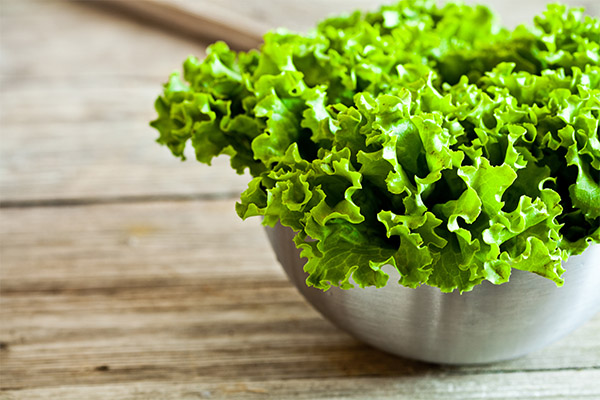
For women
Cosmetic properties of lettuce leaves can have a beneficial effect on the female body as well. For this purpose, a considerable quantity of lettuce leaves is soaked in moderately hot water in order to take a warm bath with this composition afterwards. This simple procedure helps to restore the skin and gives it elasticity.
For Men
For the male body is of great importance the presence of B vitamins in leaf lettuce, which contribute to the overall strengthening of a number of vital systems. And with the lack of this essential component can become irritable, leading to insomnia, increased likelihood of numbness in the limbs will be observed high fatigue.
If such symptoms occur, experts recommend to include in your diet lettuce leaves, which are perfectly compatible with many products and allow you to use them in a variety of recipes. This vegetable is very useful for athletes who experience great physical exertion, it helps to reduce the painful effects that occur afterwards.
Among other things, the composition of the salad can promote the growth and restoration of the hair. For this purpose, a special tincture is prepared from the leaves, capable of penetrating deep inside, reaching the epidermis, and nourishing the hair roots. This remedy also has a beneficial effect on the restoration of damaged cells.
When pregnant.
Folic acid, which is abundant in the presented vegetable, allows pregnant women to regulate the hormonal balance. In addition, it contributes to the process of activation of childbearing function. Plus, such a supplement to the diet reduces the likelihood of premature birth, as well as the threat of miscarriage. The micro-components that make up the lettuce leaves help ensure the full development of the fetus.
When breastfeeding
To enhance lactation, as well as to increase the characteristics of breast milk, it is recommended to take an aqueous infusion of lettuce seeds. In addition, lettuce, included in the diet of a nursing mother, promotes the formation of both bone and muscle tissues of the baby. This is due to the high concentration of calcium in the composition of the plant.
For children
Children are not at all forbidden to include lettuce leaves in the diet, there are even certain recommendations for this. This is due to the high content of different vitamins, such as C, K, B, B4, P and E, as well as because of the high concentration of potassium and calcium. The presented vegetable will have a beneficial effect on gastric disorders, problems with the urogenital or nervous system. Lettuce leaves have refreshing qualities, promote general calming, stabilize water balance and improve child sleep.
For weight loss
Lettuce leaves are an essential component of various diets for weight loss for a long time. Characterized by a pleasant taste varieties of this vegetable occupy the first positions in the list of modern low-calorie diets. And this is not surprising for the reason that the average 100 grams of the product contains only about 16 kilocalories. Combined with the high content of useful micronutrients, this becomes a convincing reason for the unequivocal approval of most nutritionists.
In addition, lettuce leaves are able to add volume to the demonstrated dish, emphasizing the taste of vegetables and protein products. Useful plant allows you to enrich the body with vitamins throughout the year. Plus, the unpretentious culture is easy to grow at home on a bed or in a greenhouse for daily consumption.
Leaf lettuce in medicine
The useful qualities of lettuce leaves are widely used not only in gastronomic research, but also for medical and cosmetic purposes. This plant got its cultural form in ancient times among the Mediterranean countries, where it was considered a panacea for many diseases. Today, this vegetable has become world famous as a low-calorie product that is rich in useful trace elements and can act as an effective preventive measure. However, there are diseases in which lettuce can cause harm.
Diabetes mellitus
People with diabetes are not able to eat like everyone else, the disease forces them to follow a certain diet. At the same time, they are limited in the intake of not only protein foods, but also a certain group of vegetables and fruits. It is very difficult for such people to replenish the necessary balance of micronutrients in the body because of numerous prohibitions. For them, an indispensable product can be lettuce, which contains a high concentration of essential vitamins and minerals, but there is almost no fat, there is a low calorie content.
For pancreatitis
People suffering from diseases of the gastrointestinal tract, have to completely revise their diet, excluding from food all kinds of irritants. For all their usefulness, lettuce leaves also have not escaped a tough selection because of their high content of various acids. In exacerbations of pancreatitis, such patients are forced to adhere to starvation, and in other cases, lettuce in fresh form they are allowed to eat no more than 2 times a week.
With gastritis
For this stomach condition, lettuce should also be treated with caution and used with great restraint, so as not to provoke a relapse. For gastritis, green salads should only be served finely chopped for the quickest absorption with the least time of contact with the gastric mucosa.
For gout.
This is one of the diseases in which lettuce leaves fall into the category of prohibited foods. This is due to the high content of purines: per 100 g of lettuce, their content reaches 55 mg, which will certainly increase the level of uric acid, dangerous in such cases. For patients with gout from greens, the consumption of dill and parsley is allowed, and then in limited quantities.
Cosmetological applications
The richness of useful elements in lettuce leaves has found its application not only in cooking and medicine, but also in skin care. This versatile vegetable is used to prepare a variety of facial masks and tonics. The high concentration of minerals contained in the plant allows not only to nourish the skin cells, but also to stimulate the process of rejuvenation.
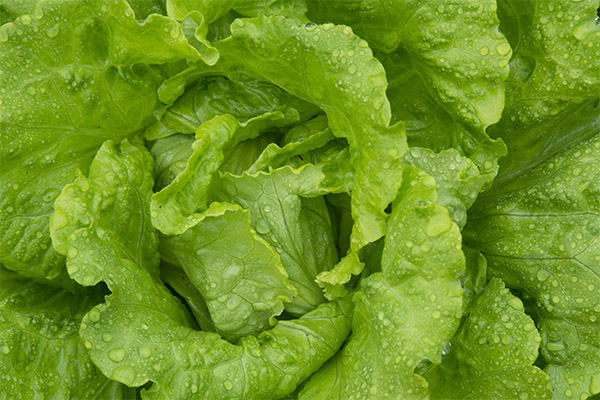
Lettuce facial tonic
To prepare this remedy, you need to choose large leaves of lettuce and squeeze the juice from them, using for this purpose a meat grinder with fine holes or a juicer. For one serving you will need 2 tablespoons of squeezed salad leaves, which are mixed with 1 tablespoon of olive oil and 1 teaspoon of freshly squeezed lemon juice. The resulting mixture is applied to the skin for 15 minutes, then washed off with warm water.
Mask for normal skin
This mask is used to nourish the skin and give freshness. To make it, finely chop lettuce leaves and take 1 tablespoon of the resulting mass. Then it is poured with one tablespoon of vegetable oil and one teaspoon of lemon juice. All ingredients are thoroughly mixed and applied to the face. After 15 minutes the mask is washed off with warm water.
For dry skin
For the preparation of this composition finely chopped juicy lettuce leaves and 1 tablespoon of the resulting mass pour 1 tablespoon of sour cream. If the skin is excessively dry and prone to peeling, it is better to use heavy cream instead of sour cream. Then a tablespoon of vegetable oil and 1 teaspoon of lemon juice are added, after which everything is thoroughly mixed. The resulting mask is applied to the face for 15 minutes, and then washed off with warm water.
For oily skin
To make a face mask according to this recipe, take juicy lettuce leaves and grind them. In the resulting mass add the protein from one egg and 1 teaspoon of lemon juice. Then all the components are well mixed and applied to the skin of the face for 15 minutes. When the time expires, the mask is washed off with cool water.
Cooking Uses
Before making a snack of lettuce, it must be prepared. To do this, the first thing to do is to cut the roots from the bunch, and then carefully disassemble the leaves. In the process of disassembling it is necessary to remove weeds that have accidentally fallen in, remove leaves with damage or with traces of drying. Next, the selected leaves are washed under running water or in a large container. You should carefully look through the grooves of the leaves, because there may be soil or insects harboring there. Wash the lettuce in very cold water, it gives the lettuce extra firmness.
Dry the washed leaves with a towel or paper towels. You can use whole leaves or tear them into small pieces by hand for different salads. Less often the recipe involves cutting the salad with a knife, in which case you need to make sure that the tool is sharp, so it does not crush the leaves.
Prepare the salad just before serving, otherwise there is a chance that it will quickly wilt. For one serving it is enough to use 50 g of greens. To ensure that the salad on the table pleased consumers with a pleasant taste and enriched with a variety of vitamins, you should consider a few important rules.
- When cooking, it is better to leave small leaves intact, and large leaves should not be cut with a knife, but torn with your hands.
- It is not necessary to prepare the salad long before serving. It is prepared before the meal itself, and dressed just before consumption.
- For all its attractiveness, the salad is used not only to decorate dishes, it is served as a garnish, an addition to protein products or as an independent appetizer.
- It is excellent with garlic or with lemon juice, in which case it does not even have to be salted.
- More is not always better, for this reason it is not recommended to use several varieties of salad in one dish. The only exception is an appetizer, which is prepared specifically from several varieties of salad.
Observing the above rules, every foodie will have the opportunity not only to enjoy the taste qualities of the popular vegetable, but also to get a powerful vitamin charge.
Harms and contraindications
Brightly pronounced harmful qualities in lettuce have not been revealed, it is considered a dietary product with a high concentration of vitamins and minerals. However, fresh salads are not recommended for people with diseases of the gastrointestinal tract (because of the content of folic acid) or persons with an individual intolerance to this product.
How to choose and store leaf lettuce
The main indicator of the quality of any salad is its freshness. Therefore, it is worth carefully examining the leaves to detect lethargy, darkening and damage. In addition, it is worth knowing that mucus formed on the stems also indicates a low quality of the product. If you need to choose a vegetable in a cauldron, you should give preference to not particularly large hard specimens, distinguished by symmetry. However, excessively hard cauliflower can have an unimportant flavor.

Lettuce is best stored in the refrigerator in the vegetable compartment, before it should be placed in a plastic bag. It is also important to remember that it should be lightly dried before storing it, as wet lettuce will quickly become soggy. In all cases, cabbage lettuces keep better than leafy lettuces.
Can I Freeze
Freezing in the freezer is not recommended. As a result of freezing the product will lose its vitamin value and taste - the most valuable characteristics that make the salad has high consumer appreciation.
Can I freeze-dry lettuce?
The same applies to dried lettuce. When dried, it not only loses its taste and valuable vitamin components, but it even changes its original color, after which it completely loses its attractiveness.
How to preserve leaf lettuce for the winter
For long-term storage, it is best to immerse lettuce leaves in marinade. In this way, the product can be stored for several months, providing the hostess table with useful elements all winter.
How to cook leaf lettuce: recipes
To get a complete idea of the preferred flavor combinations, it is suggested to consider a few simple recipes.
With lemon juice
To prepare this recipe you will need 4 bundles of lettuce, 50 g of sunflower oil, 1 tablespoon of lemon juice (you can use vinegar), mustard, ground pepper, salt.
First, divide the lettuce into individual leaves, and if they turn out to be too large, then each into several parts. Then the leaves are well washed with cold water and left for some time to let it drain. After that, prepare the sauce by mixing all the other components. The last step is to dress the salad with the prepared sauce just before serving.
With mustard
For this recipe you need four bundles of lettuce, 50 g of lean oil, the juice of half a lemon, 1 tablespoon of mustard, some dill and salt.
Dissected lettuce leaves are washed and divided into four parts each. Next, prepare the dressing by mixing the remaining components. Just before serving, the salad is placed in a salad bowl and poured with the resulting dressing.
With honey
For this recipe you will need 4 bundles of lettuce belonging to different varieties. For the dressing you will need 50 g of olive oil, 30 g of wine vinegar, 1 teaspoon of unsugared honey, pepper and salt.
The lettuce is well washed and let the water drain off. Next, the smaller leaves are left intact, and the rest are divided in half. To prepare the filling, the remaining components are whipped with a whisk. At the end, the salad is placed on a dish, pour the dressing and mix well.
With garlic
To prepare the salad according to this recipe, take 4 bundles of lettuce, 50 g of lean oil, the juice of half a lemon, 4 cloves of garlic, pepper and salt.
Well-washed lettuce is put in a colander and steeped with boiling water, then it is left for a while until the water drains off. Then, the lettuce leaves are cut into neat strips, so that the thickness does not exceed 1 cm. Afterwards, prepare the dressing by mixing all the remaining components. At the end, the salad is placed in a salad bowl and dressed with the dressing.
With nuts
For the salad in this recipe you will need 3 bundles of green salad and 50 g of walnuts, which should be lightly toasted. For the dressing you will need olive oil - 50 g, apple cider vinegar - 1 tablespoon, balsamic vinegar - 1 tablespoon, table mustard - 1 tablespoon, honey - 1 teaspoon.
The salad is disassembled into leaves, well washed and dried, and the walnuts are finely ground. Next, prepare the filling, beating with a whisk all the remaining components. Before serving, the salad with nuts is placed in a salad bowl, pour the dressing and mix well.
Why Lettuce Leaves Are Bitter
Sometimes it happens that purchased lettuce has a sensitive bitterness that spoils a pleasant taste experience. There can be several reasons for this, as well as ways to eliminate them. The only exceptions are some varieties that initially have this feature.
Causes
The least bitterness you can expect from varieties that have a colorless (maybe slightly greenish) juice, these are usually popular salad varieties that have become commonplace. Varieties that give off a white juice, similar to that of dandelions, initially suggest a slight bitterness in the flavor.
The next reason could be untimely harvesting. In this case, the lettuce leaves will look distinctly coarsened.
How to remove the bitterness
If it so happens that the purchased lettuce has tangible bitterness, it is worth giving it some time. To do this, you need to put the shredded lettuce aside for 15 minutes, and only then combine it with the rest of the components. In addition, it is preferable to tear the salad with your hands than to cut it with a knife. In this case, the possibility of oxidation, which can also cause the formation of bitterness, will be excluded.
If the leaves are initially noticeably bitter, it is advisable to soak them in cold water for a while with a little vinegar. Soaking in well-warm water for 20 minutes may also be helpful. Another way is to season the salad with lemon juice, it can neutralize the bitter taste. Bitterness also occurs in plants that have experienced a lack of watering. In this case, it is recommended to put the vegetables for some time in water, having previously separated the roots.
Bitter varieties of lettuce before cutting should undergo a mandatory bleaching procedure. For this purpose, a couple of weeks before harvesting the plants are covered with a commensurate dish or a very dense cloth. This not only prevents bitterness, but also improves the taste of the core.
Although according to many reports the slight bitterness in the taste of lettuce is evidence of a high concentration of useful elements in the plant and serves as an excellent stimulant for the appetite. However, those who are not ready to put up with it can take advantage of one of the recommendations presented here.
Can I Give Leaf Lettuce to Animals
In order to properly understand this question, it is necessary to first clarify what animals we are talking about. After all, good half of the pets simply will not eat it. For example, cats or dogs are focused on a completely different diet, they in principle do not eat lettuce, as well as other fresh vegetables.
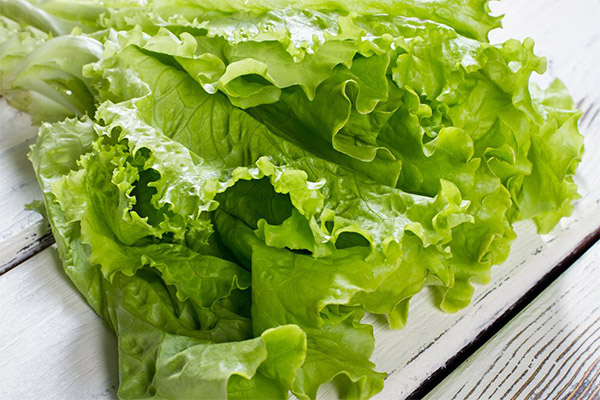
Salad is more likely to be enjoyed by various rodents, hamsters or guinea pigs. And if you can give them this treat, then nothing bad will happen from it. To say that there is any need to include lettuce in the diet of these animals, too, is impossible. However, there will be no harm from lettuce.
Also, various members of the avian fraternity may not refuse lettuce. For these pets it may even be necessary. Especially painful in winter are a variety of parrots, so that an extra portion of iodine for them can be even very useful.
As for cats, these animals are very eccentric, and it is quite difficult to make them eat what they do not want. But the cat itself is able to feel the lack of any necessary elements in the body. For this reason, if possible, it is recommended to leave greens, including lettuce, near the cat's feeder periodically. If the animal feels the need, it will use the opportunity provided.
Dogs are another matter, they don't care what they eat as long as it smells like meat, even if it has been heat-treated. For this reason, the owner should always worry about the dog. After all, it is necessary to include various additional vitamins in their usual diet from time to time. It is also recommended to add fresh vegetables in small quantities to the porridge, in this situation also salad will not be an exception.
In rare cases, some cats and dogs have a taste for food that is in principle not peculiar to them. For example, individual dogs have a passion for chocolate candy, and cats can gobble up pickles. If for some unknown reason the animal acquired a passion for leaf lettuce, then there can be no harm from this, because it is not poisonous products. However, in large quantities such food they can not digest, their stomach is configured in a different way.
Interesting facts about leaf lettuce
Lettuce became known on the Mediterranean coast many centuries before our era. Mention of this crop can be found in the sources of ancient China, Greece and Egypt. Also, lettuce was popular in ancient Rome. The modern European states adopted this tradition in the 16th century, and to the territory of the Russian state it came even later - in the 17th century. However, the housewives who were familiar with this product and knew how to cook it enjoyed great prestige and were reputed as recognized skillful cooks.
German prejudices
A special attitude towards leaf lettuce was formed in Germany, where the cooks worked with it exclusively in white gloves. They believed that if you touch the leaf with your bare hands, it would definitely ruin the valuable taste. But when it was time to mix the product with the sauce, the gloves were taken off and the procedure was performed by hand. After all, the touch of a spoon, as well as a fork, would definitely spoil the exquisite taste. Everyone was convinced of that with complete absence of logic.
The origin of the name lettuce
This lettuce has received different names over time, but today two of them remain the most popular. The first and most common is the well-known name lettuce, and the second, which can be found in some sources - lettuce seed. However, the scientific name has a completely down-to-earth reason and comes from the simple word "milk". And lettuce earned this name because of the color of the sap, which secretes the haulm of the plant when the outer shell is damaged.
The part of the plant that is above the ground is good to eat until the stem of the plant begins to form. After the stem has grown, the lettuce loses its flavor qualities and acquires a characteristic bitter taste. In Egypt, even today, the plant is considered a symbol of fertility, indicating the richness of the surrounding soil. However, for successful sprouting and timely ripening of the crop, the soil must be fertilized with manure long before planting, even from autumn, and special mineral additives are required.
The origin of lettuce and its ancestors
Definitely the origin of lettuce is not yet possible to establish any specialist. Reliably known only that since ancient times this culture was found in Africa, Europe, Siberia, Asia and Transcaucasia, there are historical references. In these places even today there is a weed plant, which is attributed to the background of the culture, it is called compass lettuce. Today, cultivation of the popular plant is common throughout the world. However, even today there are related varieties that farmers exterminate, considering them weed plants.
«Important: All information on this site is provided for informational purposes only for informational purposes only. Before applying any recommendations, consult a health care professional. specialist. Neither the editors nor the authors shall be liable for any possible harm caused by materials."

